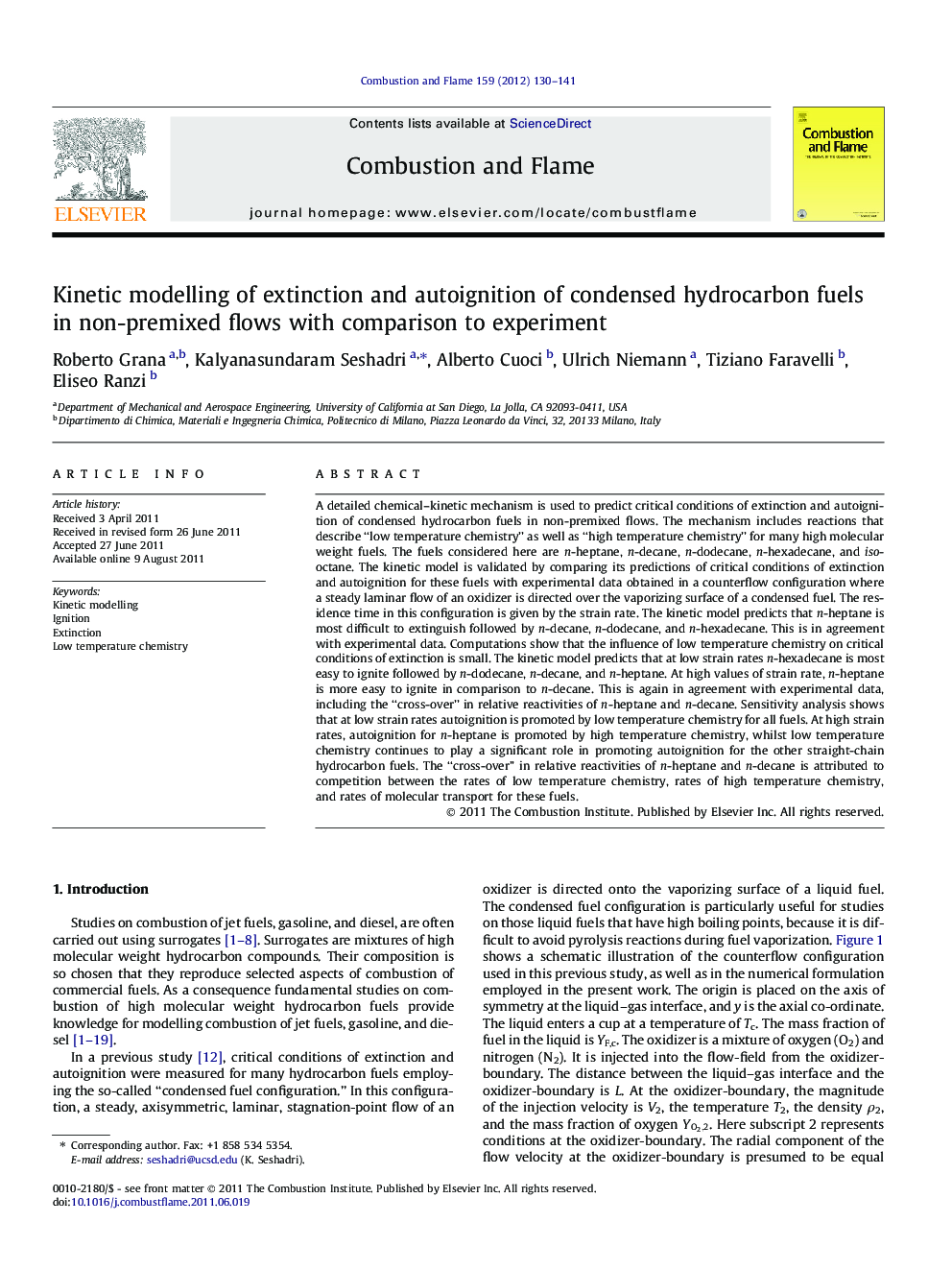| کد مقاله | کد نشریه | سال انتشار | مقاله انگلیسی | نسخه تمام متن |
|---|---|---|---|---|
| 169160 | 457981 | 2012 | 12 صفحه PDF | دانلود رایگان |

A detailed chemical–kinetic mechanism is used to predict critical conditions of extinction and autoignition of condensed hydrocarbon fuels in non-premixed flows. The mechanism includes reactions that describe “low temperature chemistry” as well as “high temperature chemistry” for many high molecular weight fuels. The fuels considered here are n-heptane, n-decane, n-dodecane, n-hexadecane, and iso-octane. The kinetic model is validated by comparing its predictions of critical conditions of extinction and autoignition for these fuels with experimental data obtained in a counterflow configuration where a steady laminar flow of an oxidizer is directed over the vaporizing surface of a condensed fuel. The residence time in this configuration is given by the strain rate. The kinetic model predicts that n-heptane is most difficult to extinguish followed by n-decane, n-dodecane, and n-hexadecane. This is in agreement with experimental data. Computations show that the influence of low temperature chemistry on critical conditions of extinction is small. The kinetic model predicts that at low strain rates n-hexadecane is most easy to ignite followed by n-dodecane, n-decane, and n-heptane. At high values of strain rate, n-heptane is more easy to ignite in comparison to n-decane. This is again in agreement with experimental data, including the “cross-over” in relative reactivities of n-heptane and n-decane. Sensitivity analysis shows that at low strain rates autoignition is promoted by low temperature chemistry for all fuels. At high strain rates, autoignition for n-heptane is promoted by high temperature chemistry, whilst low temperature chemistry continues to play a significant role in promoting autoignition for the other straight-chain hydrocarbon fuels. The “cross-over” in relative reactivities of n-heptane and n-decane is attributed to competition between the rates of low temperature chemistry, rates of high temperature chemistry, and rates of molecular transport for these fuels.
Journal: Combustion and Flame - Volume 159, Issue 1, January 2012, Pages 130–141